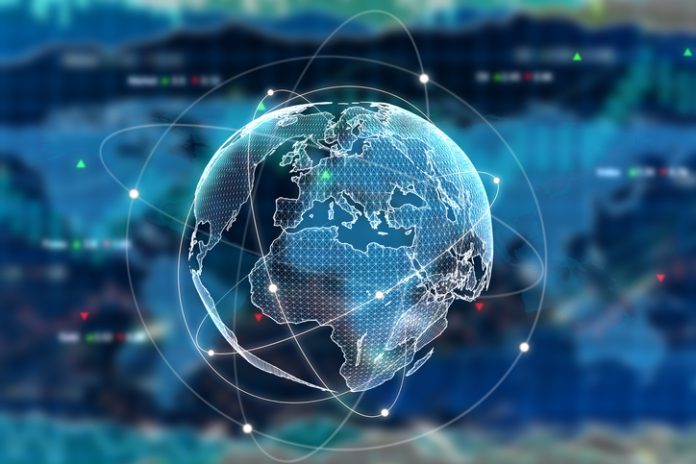After COVID-19, now comes the appalling Ukrainian-Russian war, and the threat of stagflation. But if turbulent times rule –doesn’t it pay to be vigilant? Contrary to what many believe, the recent shocks are significantly disruptive and frequent enough to consider them as black swans; they imply a mandate – and opportunity – to be vigilant.
If asked whether the recent months have been “turbulent”, the odds are high that you agree. After a global and ongoing COVID-19 pandemic, a major war has broken out, in which Russia has invaded Ukraine, as if in a large-scale remake of the invasion of Crimea about eight years ago. And if the risks of terrorism peaked in 2021, the jihadist ideology is still much in play in countries such as Iraq, Somalia and Afghanistan.
Minor turbulences are a fact of life, but major turbulences are clearly a different species. They are, obviously, highly disruptive, but also much more frequent than many believe. In consequence, companies would be well advised to anticipate the onset of turbulent periods as best they can, and to be agile enough to display strong resilience.
If a lot has been said about resilience – or the ability to adjust when large crises hit – much less is known about “sensing” major turbulence. However, our work suggests that vigilance is a critical capability to have, on top of resilience, in order to last and thrive.
Why the vigilance imperative
Turbulence needs to be sensed for the reason that a) it is highly disruptive, and b) turbulent events arise more often than pure black swans.
High disruption
Disruption from turbulent events can be assessed on multiple dimensions, such as their impact on lives and livelihood.
a) With regard to lives, the death toll from war, pandemic and terrorism rarely represents more than a few per cent of the total of millions of deaths that happen every year. But the crucial fact is that these deaths are not natural or planned. In effect, the COVID pandemic has taken the largest toll on lives, in the millions in the last two years, because of its global nature. Last year, terrorist attacks killed a few thousand (1), while the existing conflict in Ukraine may build into the tens of thousands of casualties in a few weeks.
Nevertheless, if one focuses on the affected country, the picture may be worrisome. The current daily casualty rate from the war is twice as big as the daily COVID casualties. And Ukraine is not alone. When Islamic insurgents invaded the city of Palma, in Mozambique, 150 were killed in 15 days; in comparison, 75 people lost their lives from COVID in the same time span of two weeks. The airport bombing in Kabul, Afghanistan, killed 183 people on 26 August 2021, compared with about 15 people officially dying every day from COVID-19.
b) The impact on livelihood is also tangible, especially on socio-economic activity. Disruptions include breaks in supply chains (COVID), large migration in the millions (Ukraine), and significant volatility in commodity and energy prices (Ukraine).
In the most extreme cases, high turbulence can shrink GDP and stock markets by up to 10 percentage points. Remember that COVID-19 led to a shrinkage of more than 20 per cent of economic activity in the first months after the announcement of the pandemic, essentially driven by the imposed lockdown. But stock markets also crashed by same amount in the first week, even if they managed to recover quickly in a matter of weeks.
War may have a comparable depressive effect to the COVID-19 pandemic, depending on the duration and intensity of the conflict. A multi-year conflict may shrink GDP by more than 5 points, and recovery may take many years. In the last century, threats of war with a direct effect on the US decreased the S&P 500 by an average of 3.5 per cent. In 1941, the Pearl Harbor attack on the US by Japanese aircraft led to a dip of the S&P by about 4.4 per cent on the day, while the Cuban Missile Crisis shrank the index by 2.7 per cent (2).
The 9/11 terrorist attack on the US led to a drop of 7 per cent of the S&P on the day in the US, and cost the country about $40 billion. Iraq has suffered the most from terrorist attacks in the last 15 years, with an estimated economic depletion of 10 per cent of GDP every year from 2010 to 2018 (3).
Rare but not a black swan
Black swans are extreme events, possibly 10 times the standard deviation to the mode of event distribution (3 times still happens in 0.1 per cent of cases; ten times is so infrequent that it is impossible and too costly to plan).
Are turbulent events so rare? Contrary to popular belief, our computations suggest otherwise. The probability of an event like COVID happening in a given year may be up to 1.7 per cent, according to a recent study published in the Proceedings of National Academic Science (4). Likewise, 1.9 per cent of all violent conflict events kill as many people as the five major causes of death nowadays, and still happen with a frequency of 0.5 per cent a year. Jumps above 3 per cent in the stock markets that are linked to war and major terrorist events have been limited, but still account for about 0.3 per cent a year (5).
Becoming a Vigilant Firm
What are the features of companies that excel in vigilance?
Best practices
Day and Schumaker, in a recent issue of the Sloan Management Review (2020) (6), remark that top vigilant performers stay ahead of others during highly turbulent times by knowing where to look for warning signs and how to explore their environment. Best practices include:
a) Scoping the environment beyond comfort zones. For instance, the risk of war in Ukraine, just launched by Russia, was hinted at a few times, from the early invasion in 2014 to the modus operandi of Russia in other conflicts, and a large set of prescient statements inserted in interviews made by the Russian president around Ukraine in recent years.
b) Building a playbook of opportunities linked to those turbulent events. The watchword is not to waste a good crisis. The most vigilant companies can build an opportunity playbook by simulating the possible risk scenario and thus derive possible opportunities from disruption. The scenario of a COVID-19 pandemic could signal the importance of digitisation, due to social distancing, and the further scaling up of automation as an extra gain of innovation, and a limit on cost inflation.
c) Critical analysis of weak signals. The fact that Russia interfered so as to influence the US election, the fact that cybersecurity threats were exploding, and that Russia was testing some modes of war in Syria were sufficient signals, which, although weak, in aggregate represented a mass of signals leading to a plausible scenario of a coming war.
Going forward
Companies that are hyper-vigilant are clearly following the above-mentioned practices. But we have found that they also often broaden their scope to new types of forthcoming turbulences.
It could be not only a major pandemic, or political tensions and war. We bet that the most vigilant companies are also now the ones that are building their vigilance linked to important topics such as ethics, cybersecurity or, now, sustainability and a green planet.
About the Author
 Jacques Bughin is a professor of Management, Chaire Gillet of Management Practice, at the Solvay Brussels School of Economics and Management at Université libre de Bruxelles (ULB), and among others, a former Director of McKinsey and of the McKinsey Global Institute. He advises Antler and Fortino Capital, two major VC/PE firms, and serves on the Board of multiple companies.
Jacques Bughin is a professor of Management, Chaire Gillet of Management Practice, at the Solvay Brussels School of Economics and Management at Université libre de Bruxelles (ULB), and among others, a former Director of McKinsey and of the McKinsey Global Institute. He advises Antler and Fortino Capital, two major VC/PE firms, and serves on the Board of multiple companies.
References
(1) Miller, E. (2016), Patterns of Islamic State-Related Terrorism. START Background Report, as well as Terrorism in the EU: terror attacks, deaths and arrests in 2020 | News | European Parliament (europa.eu)
(2) See Mueller, H. (2013). The economic cost of conflict. Work. Pap., Int. Growth Cent., London. See also Cutler, D. M., Poterba, J. M., & Summers, L. H. (1988). What moves stock prices?, National Bureau of Economic Research
(3) Bardwell, H., & Iqbal, M. (2021). The economic impact of terrorism from 2000 to 2018. Peace Economics, Peace Science and Public Policy, 27(2), 227–261.
(4) Intensity and frequency of extreme novel epidemics | PNAS
(5) Baker, S. R., Bloom, N., Davis, S. J., & Sammon, M. C. (2021). What triggers stock market jumps? (No. w28687). National Bureau of Economic Research.
(6) Day, G. S., & Schoemaker, P. J. (2020). How vigilant companies gain an edge
in turbulent times. MIT Sloan Management Review, 61(2), 57–64.


































